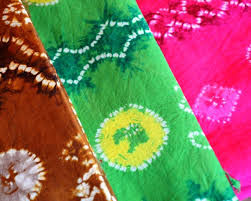7 best indonesian woven fabrics
- Dennisha Sinay
- Jul 14, 2018
- 3 min read
Many different kind of fabrics are made in Indonesia with various methods of weaving and dyeing fabrics to create beautifully-patterned cloth in cotton and silk. Certain regions specialize in a particular fabric, such as batik, ikat, songket, or tritik. Usually traditional fabrics in Indonesia play an important part of many rituals and ceremonies, from wedding party to burials. Most people only know Batik as the traditional fabric from Indonesia. In fact, there are many kinds of traditional fabrics made specific to certain provinces in Indonesia.

1. Batik
The word ‘Batik’ originated from Javanese word “amba” which means writing and “titik” which means titik. Initially, batik was made on the calico, using liquid wax in a canting (small dipper used to apply wax in batik process). Not only look beautiful, every batik patterns also have meaning and symbolize something. There are numerous of batik in Indonesia, such as batik Solo, batik Pekalongan, batik Cirebon, batik Banyumas, batik Bali, and many more.

2. Sasirangan
Sasirangan is traditional fabric of Banjar, South Kalimantan. Word ‘sasirangan’ originated from word “sirang” which means ‘tied’ or ‘basted’. Specialty patterns sketched on a calico or cotton fabric before being basted according to the pattern. The uniqueness of sasirangan is the vibrant and colorful patterns, which really reflect Kalimantan. Nowadays, there are numerous fabric material used for sasirangan such as satin, polyester, rayon, and silk. Until now, there are more than 30 sasirangan patterns sold at Kampung Sasirangan, Banjarmasin, South Kalimantan

3. Ulos
Ulos is traditional fabric of the Batak people of North Sumatera. Different kind of ulos have different ceremonial significance. Usually, Batak people use ulos on important events such as childbirth, funerals and weddings. Usually, ulos is also given to pregnant woman to protect her from danger and ease the childbirth. Dominant colors on ulos are red, black, and white with addition of gold or silver weaves. Ulos are traditionally hand-woven.

4. Tenun Ikat
Tenun ikat is Indonesian traditional fabric, made from weaves of woofs which are previously knotted and dipped in natural coloring agents. Before being woven, the yarns are knotted with plastic or ropes, according to the desired pattern. At the end, the fabric will be dipped in the coloring agents, and the knotted parts of the fabric will create the pattern. Usually people use non-machine looms to make tenun ikat. Toraja, Sumbawa, Flores, and Sumba are few of places in Indonesia which are famous with its own tenun ikat.

5. Songket
Songket is a fabric that belongs to the brocade family of textiles of Indonesia, Malaysia, and Brunei. It is usually hand-woven in silk or cotton, and patterned with gold or silver threads. Songket has various traditional patterns which represents the characteristic of its origin’s culture. In Indonesia, songket is produced in Sumatera, Kalimantan, Bali, Sulawesi, Lombok, and Sumbawa. In Sumatera, the famous songket production center is in Minangkabau Pandai Sikek area in West Sumatera.

6. Gringsing
Kain gringsing is one and only Indonesian traditional fabric that is made using ‘dobel ikat’ technique. It takes two to five years to make one sheet of kain gringsing. Kain gringsing is originated from Tenganan, Bali. According to the urban myth, Dewa Indra adored the beauty of night sky. To eternalize the beauty of night sky, Dewa Indra taught Tenganan women to weave kain gringsing. Usually, Tenganan people use hundreds-years-old kain gringsing in special ceremonies.

7. Sutra Bugis
Sutra bugis is Indonesian traditional fabric from Makassar, South Sulawesi. At a glance, Sutra Bugis have plaid patterns, but if we take a closer look, there is no fabric that has similar pattern with another. Each plaid size symbolizes different meaning. Years ago, the pattern of sutra bugis symbolizes marital status of the wearers. Aside from the patterns that symbolize marital status, there are also other patterns of sutra bugis such as tettong, makkalu, balo renni, bombang, and many more—which is also symbol of certain meanings.

8. Tenun Buna
Bunun Weaving is a weaving from NTT region and each region has its own woven characteristic. The weaving process is an activity of inserting the yarn horizontally with wooden equipment, such that it is truly through the hands of a weaver, capable of collaborating into a very beautiful fabric! And according to the reference that I read, weaving in the making can not be arbitrary, with the process of ritual (sacred prayer), so the woven fabric is not just an ordinary cloth, but a cloth that has 'soul'.








Comments